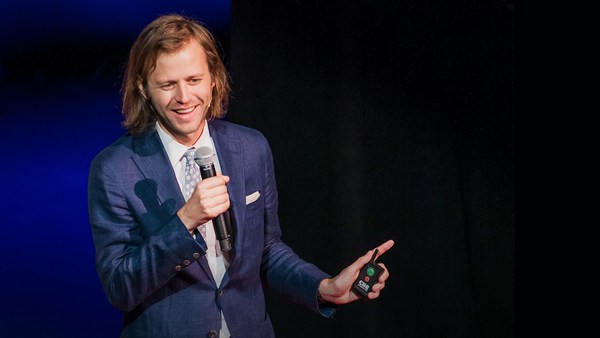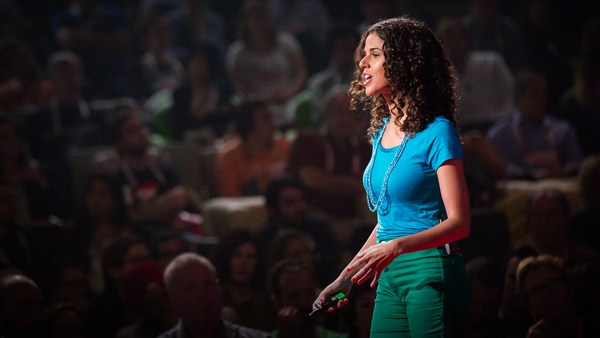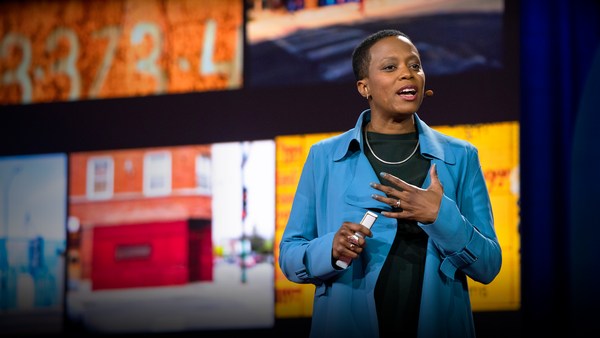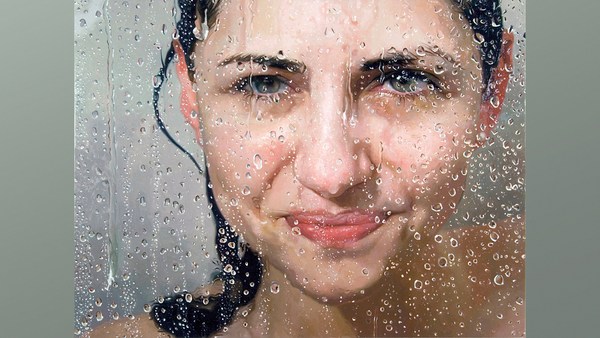Dre Urhahn: This theater is built on Copacabana, which is the most famous beach in the world, but 25 kilometers away from here in the North Zone of Rio lies a community called Vila Cruzeiro, and roughly 60,000 people live there. Now, the people here in Rio mostly know Vila Cruzeiro from the news, and unfortunately, news from Vila Cruzeiro often is not good news. But Vila Cruzeiro is also the place where our story begins.
Jeroen Koolhaas: Ten years ago, we first came to Rio to shoot a documentary about life in the favelas. Now, we learned that favelas are informal communities. They emerged over the years when immigrants from the countryside came to the cities looking for work, like cities within the cities, known for problems like crime, poverty, and the violent drug war between police and the drug gangs. So what struck us was that these were communities that the people who lived there had built with their own hands, without a master plan and like a giant work in progress. Where we're from, in Holland, everything is planned. We even have rules for how to follow the rules. (Laughter)
DU: So the last day of filming, we ended up in Vila Cruzeiro, and we were sitting down and we had a drink, and we were overlooking this hill with all these houses, and most of these houses looked unfinished, and they had walls of bare brick, but we saw some of these houses which were plastered and painted, and suddenly we had this idea: what would it look like if all these houses would be plastered and painted? And then we imagined one big design, one big work of art. Who would expect something like that in a place like this? So we thought, would that even be possible? So first we started to count the houses, but we soon lost count. But somehow the idea stuck.
JK: We had a friend. He ran an NGO in Vila Cruzeiro. His name was Nanko, and he also liked the idea. He said, "You know, everybody here would pretty much love to have their houses plastered and painted. It's when a house is finished." So he introduced us to the right people, and Vitor and Maurinho became our crew. We picked three houses in the center of the community and we start here. We made a few designs, and everybody liked this design of a boy flying a kite the best. So we started painting, and the first thing we did was to paint everything blue, and we thought that looked already pretty good. But they hated it. The people who lived there really hated it. They said, "What did you do? You painted our house in exactly the same color as the police station." (Laughter) In a favela, that is not a good thing. Also the same color as the prison cell. So we quickly went ahead and we painted the boy, and then we thought we were finished, we were really happy, but still, it wasn't good because the little kids started coming up to us, and they said, "You know, there's a boy flying the kite, but where is his kite?" We said, "Uh, it's art. You know, you have to imagine the kite." (Laughter) And they said, "No, no, no, we want to see the kite." So we quickly installed a kite way up high on the hill, so that you could see the boy flying the kite and you could actually see a kite. So the local news started writing about it, which was great, and then even The Guardian wrote about it: "Notorious slum becomes open-air gallery."
JK: So, encouraged by this success, we went back to Rio for a second project, and we stumbled upon this street. It was covered in concrete to prevent mudslides, and somehow we saw a sort of river in it, and we imagined this river to be a river in Japanese style with koi carp swimming upstream. So we decided to paint that river, and we invited Rob Admiraal, who is a tattoo artist, and he specialized in the Japanese style. So little did we know that we would spend almost an entire year painting that river, together with Geovani and Robinho and Vitor, who lived nearby. And we even moved into the neighborhood when one of the guys that lived on the street, Elias, told us that we could come and live in his house, together with his family, which was fantastic. Unfortunately, during that time, another war broke out between the police and the drug gangs. (Video) (Gunfire) We learned that during those times, people in communities really stick together during these times of hardship, but we also learned a very important element, the importance of barbecues. (Laughter) Because, when you throw a barbecue, it turns you from a guest into a host, so we decided to throw one almost every other week, and we got to know everybody in the neighborhood.
JK: We still had this idea of the hill, though.
DU: Yeah, yeah, we were talking about the scale of this, because this painting was incredibly big, and it was insanely detailed, and this process almost drove us completely insane ourselves. But we figured that maybe, during this process, all the time that we had spent in the neighborhood was maybe actually even more important than the painting itself.
JK: So after all that time, this hill, this idea was still there, and we started to make sketches, models, and we figured something out. We figured that our ideas, our designs had to be a little bit more simple than that last project so that we could paint with more people and cover more houses at the same time. And we had an opportunity to try that out in a community in the central part of Rio, which is called Santa Marta, and we made a design for this place which looked like this, and then we got people to go along with it because turns out that if your idea is ridiculously big, it's easier to get people to go along with this. (Laughter) And the people of Santa Marta got together and in a little over a month they turned that square into this. (Applause) And this image somehow went all over the world.
DU: So then we received an unexpected phone call from the Philadelphia Mural Arts Program, and they had this question if this idea, our approach, if this would actually work in North Philly, which is one of the poorest neighborhoods in the United States. So we immediately said yes. We had no idea how, but it seemed like a very interesting challenge, so we did exactly the same as we did in Rio, and we moved into the neighborhood and started barbecuing. (Laughter) So the project took almost two years to complete, and we made individual designs for every single house on the avenue that we painted, and we made these designs together with the local store owners, the building owners, and a team of about a dozen young men and women. They were hired, and then they were trained as painters, and together they transformed their own neighborhood, the whole street, into a giant patchwork of color. (Applause) And at the end, the city of Philadelphia thanked every single one of them and gave them a merit for their accomplishment.
JK: So now we had painted a whole street. How about we do this whole hill now? We started looking for funding, but instead, we just ran into questions, like, how many houses are you going to paint? How many square meters is that? How much paint are you going to use, and how many people are you going to employ? And we did try for years to write plans for the funding and answer all those questions, but then we thought, in order to answer all those questions, you have to know exactly what you're going to do before you actually get there and start. And maybe it's a mistake to think like that. It would lose some of the magic that we had learned about that if you go somewhere and you spend time there, you can let the project grow organically and have a life of its own.
DU: So what we did is we decided to take this plan and strip it away from all the numbers and all the ideas and presumptions and just go back to the base idea, which was to transform this hill into a giant work of art. And instead of looking for funding, we started a crowdfunding campaign, and in a little over a month, more than 1,500 people put together and donated over 100,000 dollars. So for us, this was an amazing moment, because now — (Applause) — because now we finally had the freedom to use all the lessons that we had learned and create a project that was built the same way that the favela was built, from the ground on up, bottom up, with no master plan.
JK: So we went back, and we employed Angelo, and he's a local artist from Vila Cruzeiro, very talented guy, and he knows almost everybody there, and then we employed Elias, our former landlord who invited us into his house, and he's a master of construction. Together with them, we decided where to start. We picked this spot in Vila Cruzeiro, and houses are being plastered as we speak. And the good thing about them is that they are deciding which houses go next. They're even printing t-shirts, they're putting up banners explaining everything to everybody, and talking to the press. This article about Angelo appeared.
DU: So while this is happening, we are bringing this idea all over the world. So, like the project we did in Philadelphia, we are also invited to do workshops, for instance in Curaçao, and right now we're planning a huge project in Haiti.
JK: So the favela was not only the place where this idea started: it was also the place that made it possible to work without a master plan, because these communities are informal — this was the inspiration — and in a communal effort, together with the people, you can almost work like in an orchestra, where you can have a hundred instruments playing together to create a symphony.
DU: So we want to thank everybody who wanted to become part of this dream and supported us along the way, and we are looking at continuing.
JK: Yeah. And so one day pretty soon, when the colors start going up on these walls, we hope more people will join us, and join this big dream, and maybe one day, the whole of Vila Cruzeiro will be painted.
DU: Thank you.
(Applause)





